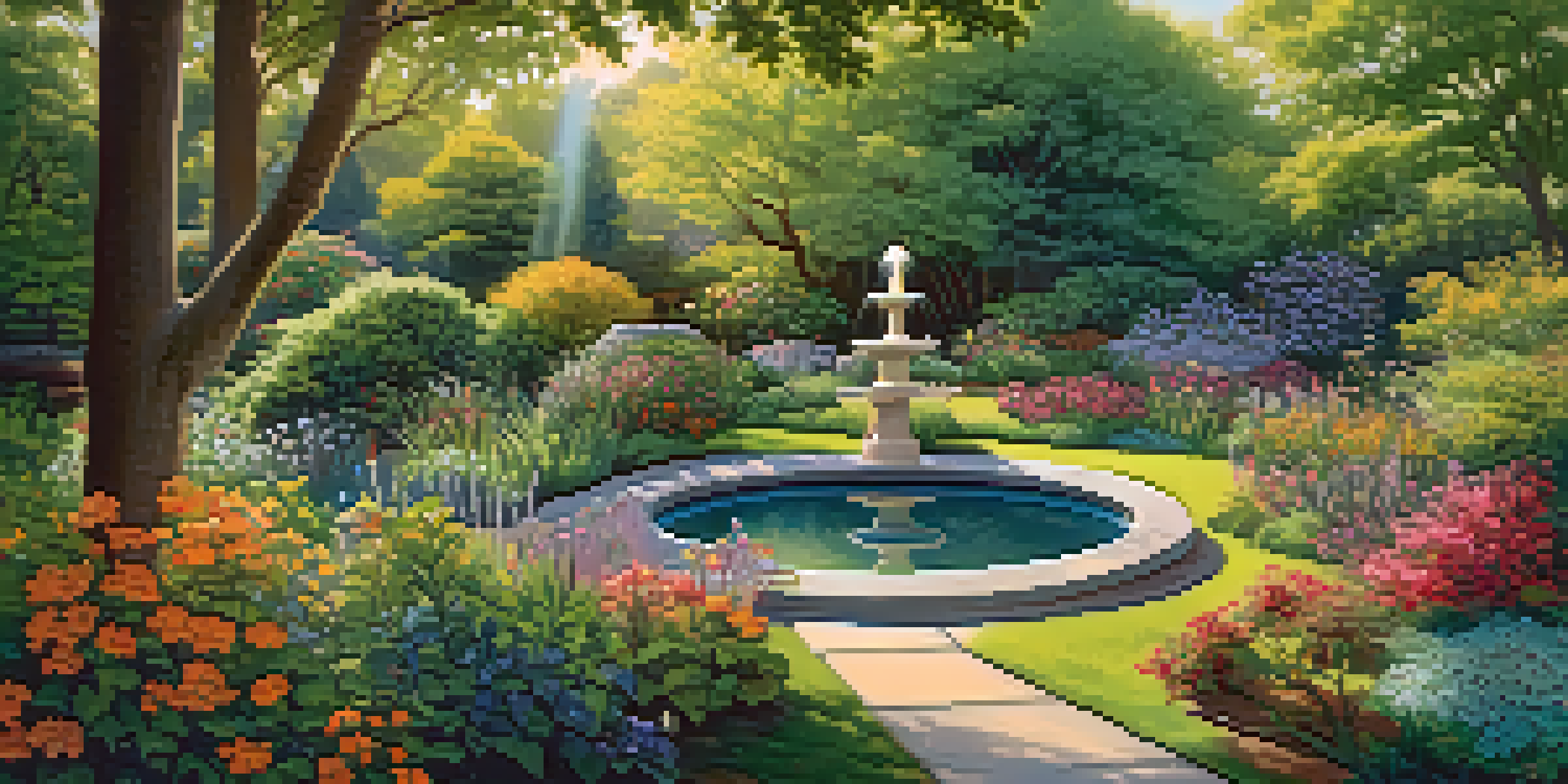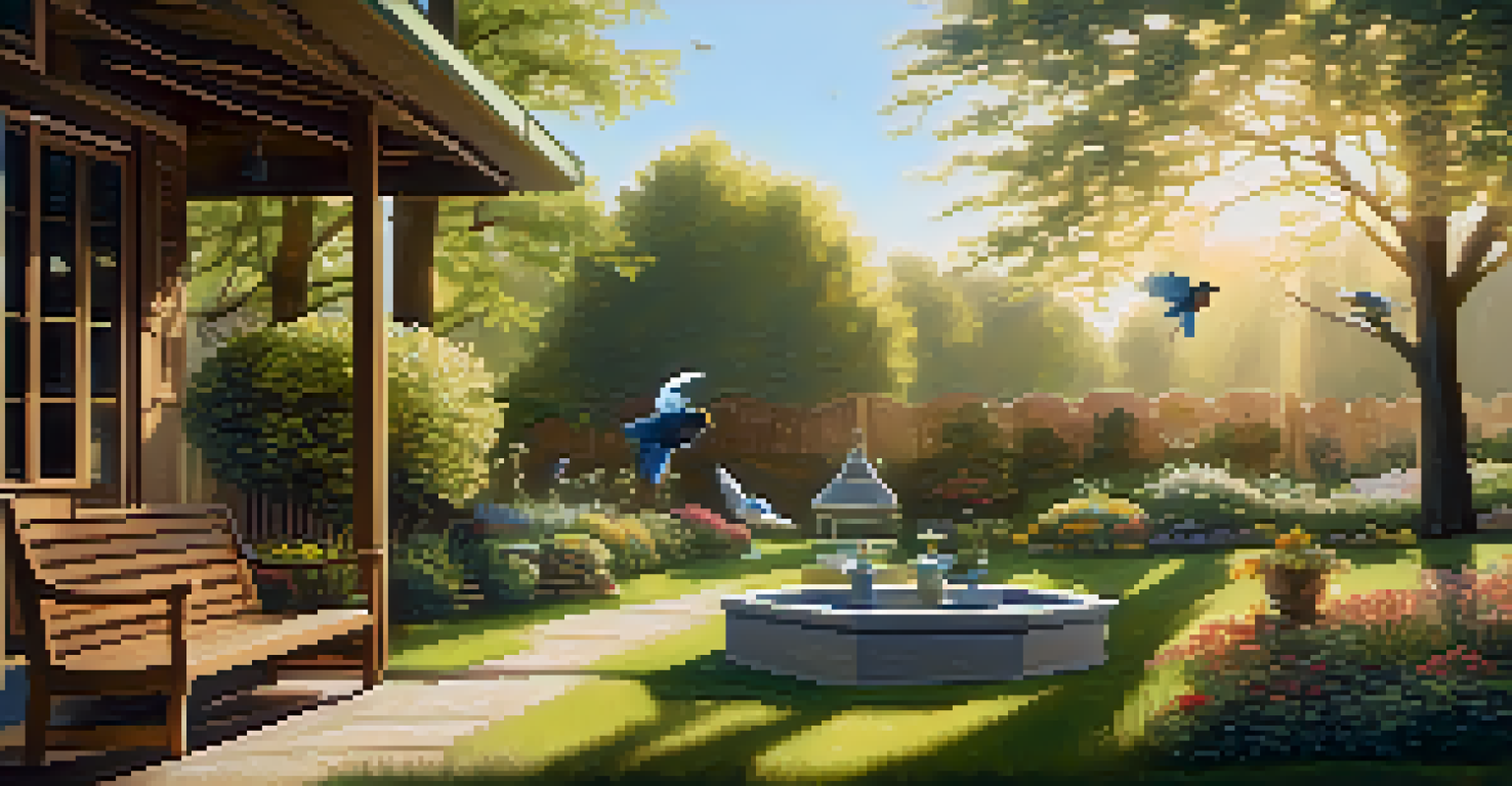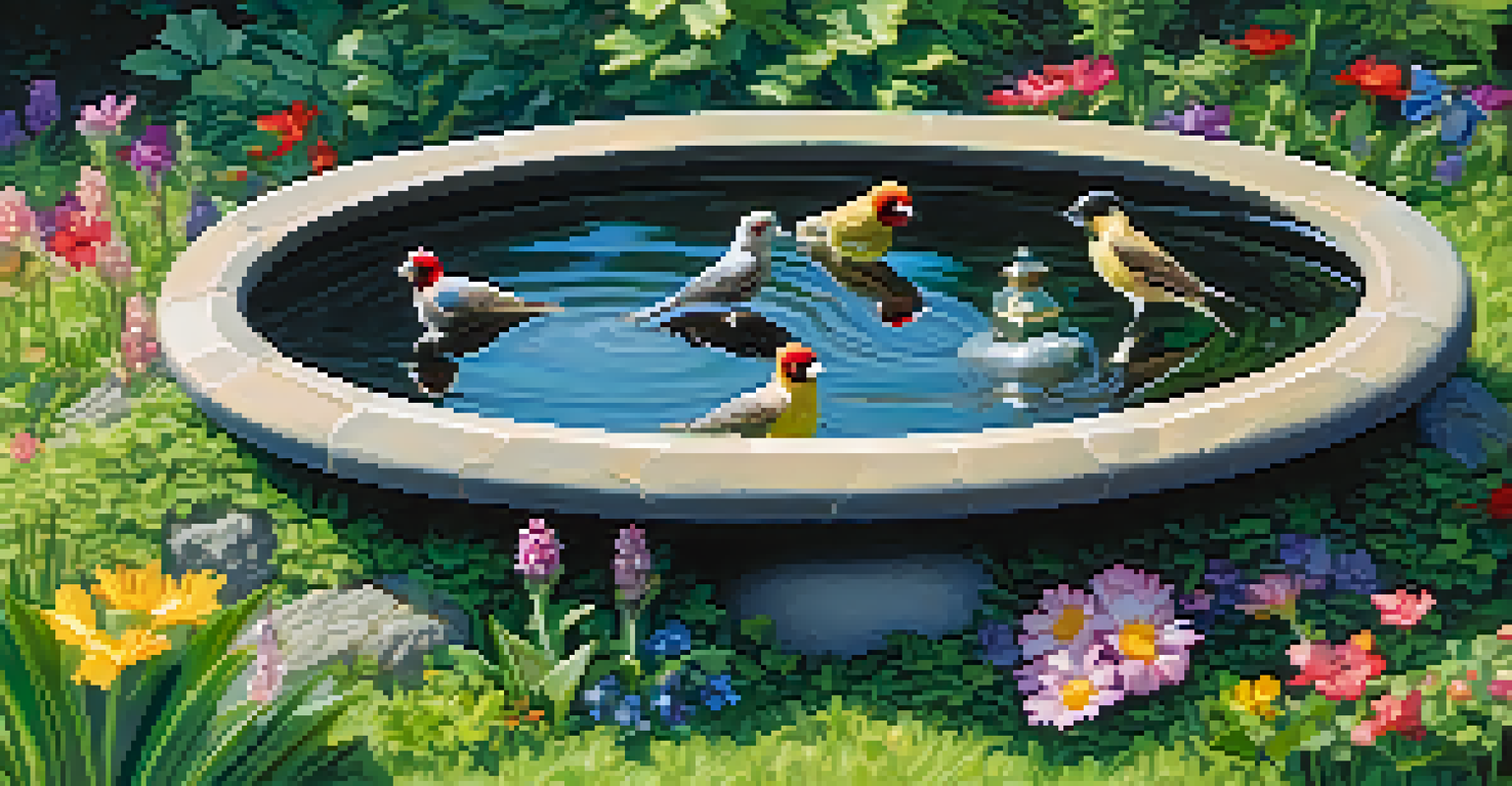How to Create a Bird-Friendly Garden Environment

Understanding the Needs of Your Feathered Friends
Birds are incredible creatures, but they have specific needs that must be met for them to thrive in your garden. Different species require different environments, so it's essential to do a little research on the types of birds you hope to attract. By understanding their needs, such as food sources, shelter, and nesting sites, you can create a welcoming habitat.
Birds are indicators of the environment. If they are in trouble, we know we'll soon be in trouble.
For instance, some birds prefer open spaces with low shrubs, while others thrive in dense thickets. You can also consider seasonal changes, as migratory birds may visit your garden at different times of the year. Recognizing these requirements can help you plan a garden that supports diverse bird populations.
Ultimately, creating a bird-friendly garden is about catering to these diverse needs, ensuring that your outdoor space becomes a safe haven for various bird species. With a bit of thought and planning, you can set the stage for a bustling avian community right in your backyard.
Choosing the Right Plants for Your Garden
Selecting the right plants is crucial to attracting birds. Native plants are often the best choice, as they provide the food and shelter that local birds have evolved to rely on. For example, berry-producing shrubs like elderberry or serviceberry can be a hit among fruit-loving birds, while flowering plants can attract insects, providing an essential food source for insectivorous species.

Consider incorporating a variety of plants that bloom at different times of the year. This not only ensures a continuous food supply but also creates a visually stunning garden. Additionally, plants with different heights—like tall trees, medium shrubs, and low ground cover—will offer diverse habitats for various bird species.
Create a Bird-Friendly Habitat
Understanding the specific needs of birds, such as food, shelter, and nesting options, is essential for creating a welcoming environment in your garden.
Remember, a diverse plant selection not only benefits birds but can also enhance your garden's aesthetic appeal. By creating layers of greenery, you can make your garden a vibrant ecosystem that welcomes both birds and other wildlife.
Providing Food Sources for Birds Year-Round
Feeding birds is a great way to attract them to your garden, especially during harsh weather when natural food sources are scarce. You can set up bird feeders filled with seeds, suet, or nectar to cater to different species. While sunflower seeds are popular, consider offering a mix that includes peanuts, millet, and safflower to attract a broader range of birds.
The best way to attract birds to your garden is to create a habitat that meets their needs.
Don’t forget about natural food sources! Planting flowers like sunflowers or coneflowers can provide seeds, while berry bushes will supply fruit. This combination not only attracts birds but also supports local ecosystems by providing food for other wildlife.
By offering food sources throughout the year, you're likely to establish a regular bird visiting schedule. Observing their feeding habits can also be an enjoyable way to connect with nature and learn more about the species that frequent your garden.
Creating Safe Nesting Areas for Birds
Nesting is a critical part of a bird's life cycle, and creating safe spaces for them to build their nests can significantly enhance your garden's appeal. Consider leaving natural features like dense shrubs and grasses, as many birds prefer to nest in these areas for protection from predators. Avoid cutting back all the foliage in the fall; instead, leave some for winter coverage.
You can also install birdhouses tailored to specific species. For example, bluebirds prefer open areas with houses mounted on poles, while wrens enjoy smaller houses tucked away in shrubs. Make sure to research the right dimensions and entrance hole sizes to attract the birds you want.
Diverse Plant Selection Matters
Incorporating native plants and a variety of species can attract different birds while enhancing the visual appeal of your garden.
Remember, creating a safe nesting environment isn't just about the physical spaces; it's also about minimizing disturbances. Keep pets indoors during nesting season and limit garden noise to ensure birds feel secure while raising their young.
Water Sources: A Vital Element for Birds
While food and shelter are essential, clean water is equally crucial for birds. Installing a birdbath or a small pond can provide birds with a reliable water source for drinking and bathing. Just like us, birds need water to stay hydrated, especially during hot summer months.
To make your birdbath more inviting, consider adding features like a shallow basin with rocks or pebbles. This not only gives birds a place to perch but also prevents them from drowning. Regularly change the water to keep it fresh and clean, as birds are less likely to visit if the water is dirty.
Incorporating water sources can also create a peaceful ambiance in your garden. The sound of trickling water can attract not just birds, but other wildlife as well, turning your garden into a lively sanctuary.
Minimizing Pesticide Use for Bird Safety
One of the biggest threats to birds is the use of pesticides, which can harm them directly or reduce their food sources. By minimizing or eliminating pesticide use in your garden, you not only protect the birds but also promote a healthier ecosystem. Consider using organic gardening methods or natural pest repellents to keep your garden thriving without harming wildlife.
Companion planting is another effective strategy. By growing certain plants together, you can naturally deter pests without resorting to chemicals. For instance, marigolds are known to repel nematodes and other harmful insects, making them excellent companions in your garden.
Water and Safety Are Key
Providing clean water sources and minimizing pesticide use are crucial steps to ensure the safety and health of birds in your garden.
By making conscious choices about pesticide use, you can create a healthier environment for birds and other beneficial creatures. Fostering a chemical-free garden will not only attract more wildlife but also contribute to overall ecological health.
Creating a Birdwatching Space in Your Garden
Once you've made your garden bird-friendly, why not create a dedicated space for birdwatching? A comfortable seating area, perhaps with a view of feeders or birdbaths, can enhance your birdwatching experience. Adding a few chairs or benches along with some binoculars can turn your garden into a personal retreat where you can enjoy observing nature.
You might also consider incorporating bird identification guides or apps to help you learn about the species visiting your garden. Not only does this elevate your birdwatching experience, but it can also be a fun educational activity for families and friends.

Creating a birdwatching space encourages you to spend more time outdoors while developing a deeper appreciation for wildlife. The more you observe, the more you'll learn about the unique behaviors and characteristics of your avian visitors.